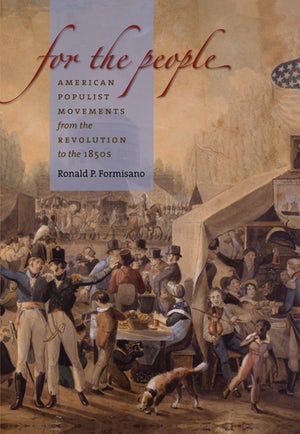The Common-place Web Library reviews and lists online resources and Websites likely to be of interest to our viewers. Each quarterly issue will feature one or more brief site reviews. The library itself will be an ongoing enterprise with regular new additions and amendments. So we encourage you to check it frequently. At the moment, the library is small, but with your help we expect it to grow rapidly. If you have suggestions for the Web Library, or for site reviews, please forward them to the Administrative Editor.
http://www.virtualjamestown.org/
“Virtual Jamestown” offers visitors the opportunity to delve into the history of English exploration and colonizing efforts in the late sixteenth and seventeenth centuries. With the spotlight on Jamestown as the four hundredth anniversary of its settlement nears, sites such as this one can serve a useful function as online archives and sources of curriculum materials for teachers. Although the site is far from exhaustive in its coverage, it contains images and documents that can be usefully mined.
The images on “Virtual Jamestown” are wide ranging and include a collection of twenty-two John White drawings. These watercolors—among seventy inspired by scenes and individuals White, an artist and cartographer, observed during his 1585 voyage to America and subsequent thirteen-month stay in Roanoke—are paired with engravings produced by Theodor De Bry. Based on White’s original works, these engravings were created for inclusion in mathematician Thomas Hariot’s 1590 account of the voyage he and White took to America.
A collection of artifacts from seventeenth-century Virginia provides additional visual and material texture. Provided by Jamestown Rediscovery, the Association for the Preservation of Virginia Antiquities, the online archive of objects includes such unusual items as a silver ear picker, designed to resemble a “sea rhinoceros” or dolphin. Featuring an ear scooper at one end and a tool for tooth and nail cleaning at the other, this item, at once utilitarian and ornate, was likely displayed on a chain or girdle and worn decoratively by its owner. There is also a seventeenth-century chamber pot, a Spanish olive jar (named so for its shape rather than its likely contents), Indian projectile points, and the skeleton of a man shot through the knee, whose identity and race continue to be the subject of debate.
Original maps offer visitors insight into seventeenth-century representations of the area, and a zoom function enables an up-close examination of John Smith’s 1608 map of Virginia. On the interactive Jamestown page are two maps that generate displays of Smith’s explorations of the region and a virtual tour of the fort. The “Patterns of Settlement” map allows visitors to explore the shifting populations and sites of indigenous and colonial residents of the region in 1607, 1619, 1624, and 1634. More detail about who constituted that colonial population is available in the census records, such as the 1608 supply list—which provides names and occupations of new arrivals, like perfumer Robert Alberton—and the 1624-5 muster records, which can be searched to generate demographic data about households.
One valuable database on the site contains demographic information from the contracts of over fifteen thousand indentured servants from three different seventeenth-century registers and one eighteenth-century register. The contracts can be searched by name, hometown, destination, and occupation. For example, using Sheffield as the servant’s place of origin generates one record, that of Benjamin Hoyland, a tallow chandler headed for four years of service in Jamaica. Using female and Virginia as qualifiers produces a list of over one thousand women’s names, including Mary Giles, a spinster from Salwarpe, Worchestershire, whose agent, a surgeon named Richard Allen, arranged for her to serve for five years in Virginia in exchange for her passage in 1654. Only two contracts, both for men, are reproduced.
The “Virtual Jamestown” project received a 1999 grant from the National Endowment for the Humanities for its development, with additional support from several state entities. A collaborative project of Virginia Polytechnic Institute, the University of Virginia, and the Virginia Center for Digital History, “Virtual Jamestown” has apparently undergone limited development since 2000. There are numerous references on the site to items still under construction but no apparent recent updates to indicate when these will be up and running. Nonetheless, the site offers engaging and interesting materials. For those who wish to identify additional databases and teaching resources relevant to Virginia’s history, consult Virginia 400: Your Online Guide to 400 Years of Virginia History, 1607-2007, a clearinghouse site with a good annotated list of helpful Websites, produced by the Center for History and New Media (see Common-place Web Library review, vol.6, no.4, July 2006).
This article originally appeared in issue 7.2 (January, 2007).



















